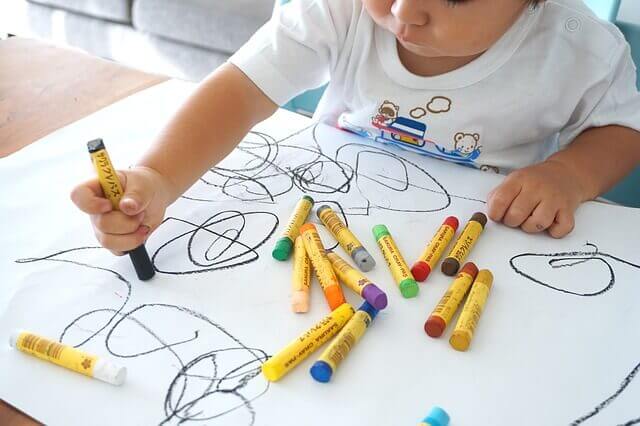Child drawing, in addition to being a playful activity, is one of the ways in which children can transfer reality to a sheet or other type of support, expressing their imagination or their particular vision of the world in which they live: their constructions of how the world is.
The relationship between the mental images of the child and his drawings is very close, while the mental images are internalized imitations, the drawing is an externalized imitation, so in many cases investigating the qualitative development of children’s drawing allows us to understand, with some reservations, the symbolic capacity of the child.
- In this article we will talk about Luquet’s various studies on the stages of children’s drawing.
- In which he begins by establishing that the main feature of children’s drawing is that it is realistic.
- Children are more focused on drawing the characteristics of reality than on aspects related to artistic beauty.
- The stages by which child drawing evolves are: (a) casual realism.
- (b) frustrated realism.
- (c) intellectual realism and (d) visual realism.
The drawing begins as an extension of the motor activity that is captured in a medium, so the child’s first productions will be what we call doodle, so scribbles are footprints left by the child from his first research on his movements. provide the basis for the next steps.
Soon, children begin to find similarities between their drawings and reality, or even try to translate them, even if they do not have the ability to do so, if you ask them what they draw, they may not say anything at first, but as soon as they find some analogy between drawing and reality, they will consider it a representation of it.
This step is called casual realism, since the representation of reality comes after or while drawing, there is no prior intention to draw a specific aspect of reality, the resemblance is fortuitous or involuntary, but the child receives it enthusiastically and sometimes even, once given the analogy, tries to improve the drawing.
The child tries to draw something specifically, but his intention is frustrated by certain obstacles and does not get the result he wants, the main one is the control of the engine, which has not yet developed enough precision for the requirements of his designs. the problem is the interrupted and limited nature of child care; by not paying enough attention, some of the details that the design should have are ignored.
According to Luquet, the most important aspect of this step is the “synthetic handicap”. It is the child’s difficulty in organizing, organizing, and guiding the various elements of the drawing. When drawing, the relationship between the elements is very important, because its Organization is the one that shapes the drawing. However, children at this point have problems with that. For example, when drawing faces, the mouth may be above the eyes.
Once the obstacles of the previous stage and the “synthetic incapacity” have been overcome, nothing prevents the drawing of the child from being completely realistic. But a curious aspect is that childish realism does not resemble adult realism. The child does not translate reality as he sees it, but as he knows, we face intellectual realism.
It is perhaps the scene that best represents children’s drawing and the most interesting in terms of research and study. Throughout this stage, we will see two essential features presented by the child’s drawings: the?Transparency? And the “movement. “
When we talk about “transparency”, we mean that the child draws the things that are hidden, making transparent what obscures them. For example, you draw a chicken on an egg or feet on your shoes. The other process, “movement”, is to project the object to the ground, ignoring perspective; an example is to draw the facade of a house vertically and the interior of the rooms seen from above.
These two characteristics show us how visual factors are irrelevant when expressing drawings, however, the child looks at his mental representation and tries to represent what he knows in what he wants to draw, and that is why “errors” appear, such as the transparency of opaque things or the lack of importance given to the maintenance of perspective.
From the age of eight or nine, a drawing close to the adult appears, in which the child draws reality as he sees it, for this purpose the child follows two rules: perspective and adherence to the visual model. The characteristics of intellectual realism, disappear completely: eliminate non-visible objects, adopt a unique perspective and maintain the proportion of dimensions, that is, the child adopts a visual realism.
For this reason, children’s drawings lose their own characteristic that defined them, and many children also begin to lose interest in drawing because they begin to feel that their ability does not allow them to make drawings close to reality.
In conclusion, it should be noted that while we can establish a step-by-step design development, we must be careful, since this evolution is not as linear as we can imagine, we will find advances and setbacks through the different phases. In the face of a more difficult task, the child may adopt the strategy from an earlier step.

